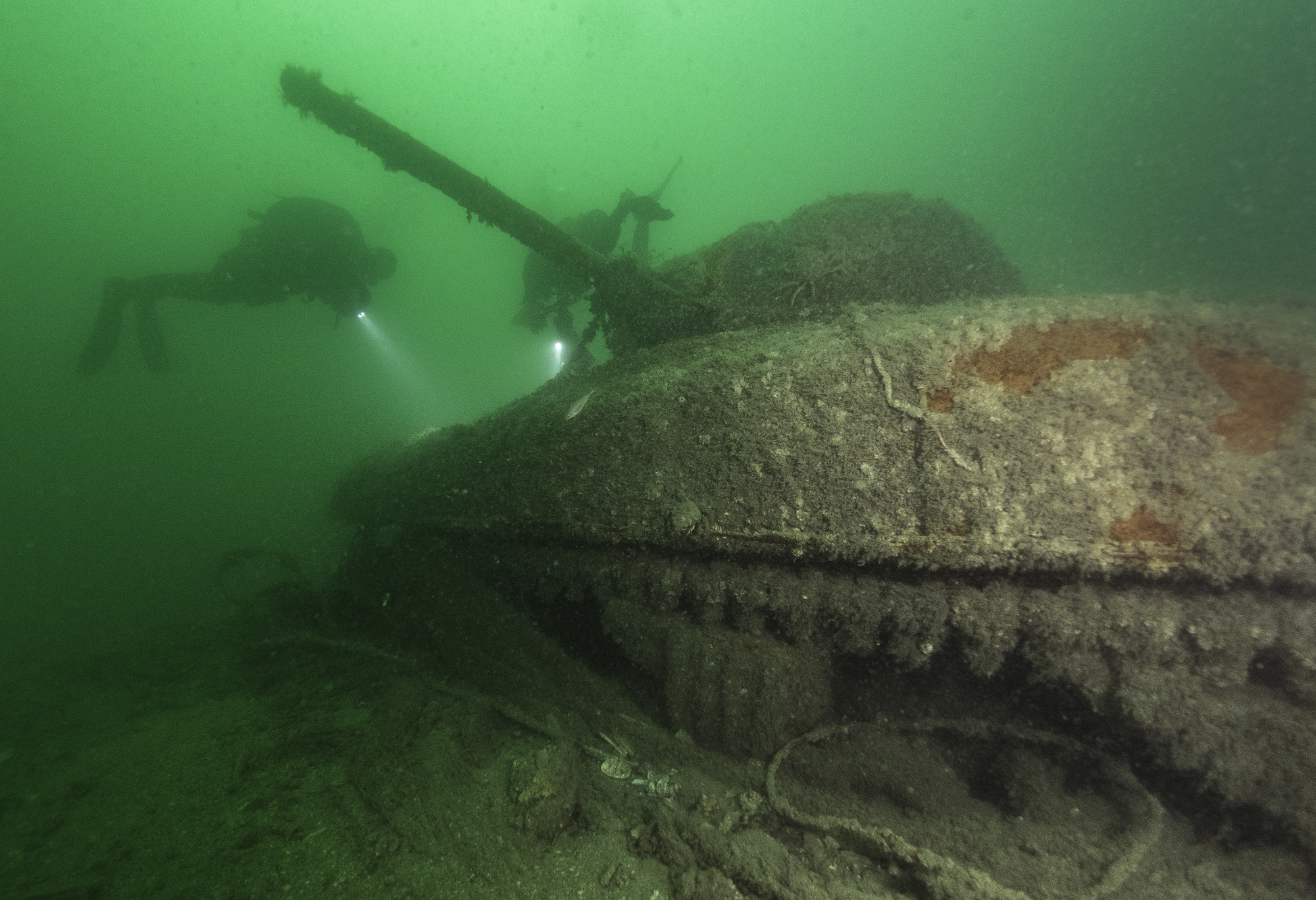
- Home
- Immersion on the wrecks of the Normandy landings
- The Gooseberries
The installation of breakwaters in front of the beaches made it possible to protect the landing operations prior to the construction of artificial harbours.
Mulberries and Gooseberries
Beginning on D-Day, the Allies started building two artificial harbours (Mulberries), so that they could land troops and equipment before traditional ports were recaptured from the Germans. But the weather was not favourable and Mulberry B (for British) was not operational until 18 June 1944, while Mulberry A (for American) had to be abandoned after the storm of 19–21 June. The remains of these two artificial harbours were the subject of a geophysical survey, using a multibeam echo sounder. The Mulberry A remains, located in the Saint-Laurent-sur-Mer sector, were studied during the NNHC campaigns in 2000–2002 and those of Mulberry B, around Arromanches, by UKHO in 2011.
Because neither of these two artificial harbours were operational on D-Day, the Allies rapidly installed five breakwaters in order to protect operations in the five landing sectors. Code-named Gooseberries, they consisted of rows of old vessels that were deliberately sunken as blockships, to protect smaller vessels from the swell. The Mulberries A and B were then set up around Gooseberries no. 2 (Omaha) and no. 3 (Gold). The height of the largest caissons in these Mulberries allowed them to accommodate deep-draft vessels at high tide. The Americans landed 10,000 tonnes daily, on average, in the shelter of the Gooseberries, compared with 6,000 tonnes in Mulberry B.
Studied Gooseberries
While Gooseberry no. 4, in front of Juno, has not really been studied, breakwater no. 1 (in front of Utah) and no. 5 (in front of Sword) were the subjects of geophysical surveys by the DRASSM, in 2017 and 2019 respectively.
At Sword, surveys precisely located of the hull bottoms of the Empire Tamar, the Courbet, the Becheville and the Dover Hill, wrecks that were extensively scrapped, and have been documented by Caen Plongée. The acoustic data confirms that, at best, only some debris remains of the five other blockships that made up the eastern portion of this breakwater. This difference is due to the evolution of salvage methods; in the western part of the breakwater, only sheet metal protruding from the substrate was cut with a blowtorch, at the surface or by divers, whereas the wrecks situated to the East, such as the Sumatra, were destroyed by explosive, and the remains were removed using a claw crane that could dig into the mud.
Gooseberry no. 1, off Utah Beach, consisted of nine metal-hulled blockships and two ferrocement freighters, the Vitruvius and the David O’Saylor. Due to their composition, these two wrecks were not salvaged and remain well preserved.



